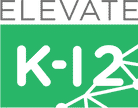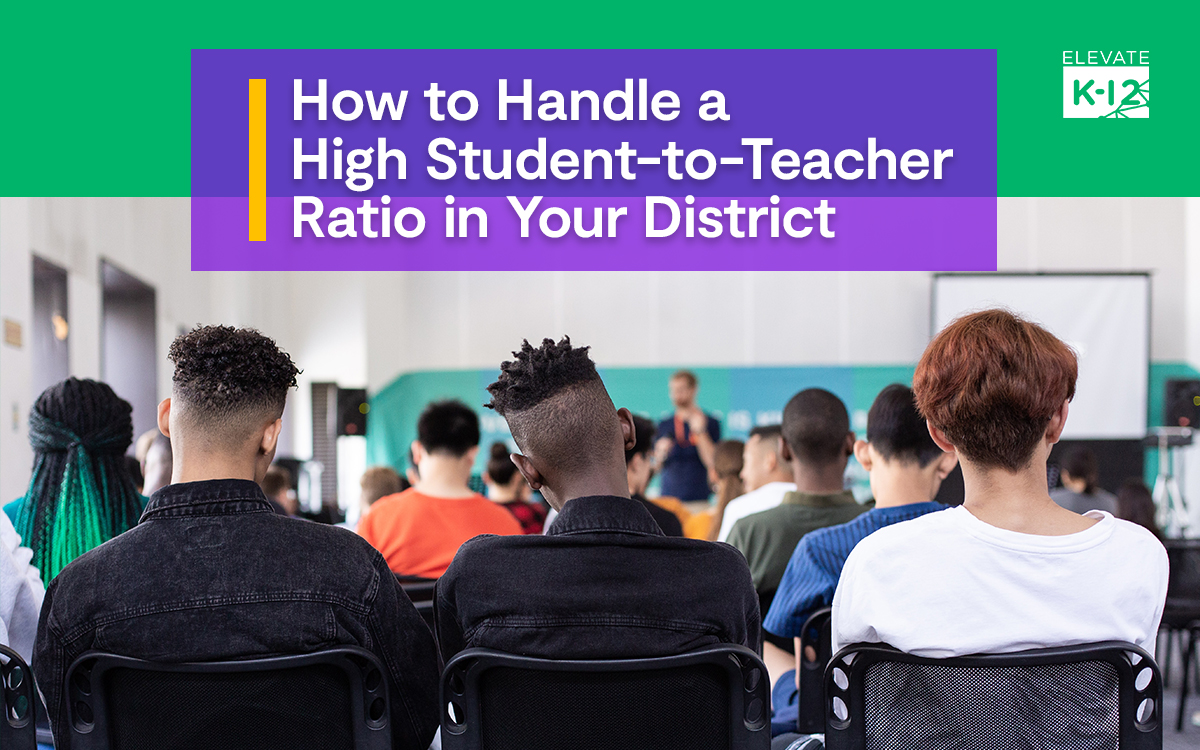Can you imagine trying to learn in a classroom overstuffed with forty restless students and just one teacher there to wrangle them all? Unfortunately, this is the reality for many students in public schools struggling with high student-to-teacher ratios.
If this is your school, you’re not alone. Teaching shortages across the United States have made what should be the exception quite common. The effect of high ratios is insidious — over time, it can lead to diminished student outcomes and teacher burnout.
But how do you effectively manage this situation? This article will go over the best strategies for addressing this problem.
What Is a Student-To-Teacher Ratio?
A student-to-teacher ratio describes the number of students per teacher in a school. For example, a school with 5,000 students and 200 teachers has a 25:1 student-to-teacher ratio. In other words, for each teacher, there are 25 students.
This ratio is an important metric for measuring the quality of education at a school. The more students per teacher, the less personalized attention each student gets.
Plus, high ratios indicate that teachers are likely overwhelmed with work — leading to less capacity for meeting students’ individual needs. It’s more challenging to notice that a student is struggling when you’re trying to manage a crowded classroom.
Lower student-to-teacher ratios, on the other hand, are better for student achievement. A 10:1 student-to-teacher ratio, for example, is on the low end. To achieve this ratio with the same 5,000 students, you would need 500 teachers. This may seem like a high number of teachers, but it means students get personalized attention.
When fewer students are in a class, teachers can give individual students the help they need to succeed. Sometimes, schools allocate teachers so that students with a higher need for personalized attention are in classrooms with lower ratios. For example, special education classrooms may have smaller class sizes to lower the student-to-teacher ratio.
Younger students may also need lower ratios because they don’t have as much autonomy as older students and require more supervision.
Understanding High Student-To-Teacher Ratios
There is no ideal student-to-teacher ratio. Different factors affect how large a class can get before it becomes too much, including the age of the students, their needs, and the resources available to that classroom.
However, teachers tend to agree that a class size of more than 15–17 students becomes unwieldy. Unfortunately, the average student-to-teacher ratio in the U.S. doesn’t meet that standard.
In reality, the average class size is 20 students, and some schools approach 30 students per class — or even 40. New Jersey and California are among the states with the highest overall averages.
As a result, teachers are overworked and exhausted. They’ve called out the increasingly larger class sizes nationwide and asked the education system to do better.
If we know that lower student-to-teacher ratios are better for both students and teachers, why are class sizes so large? Why is it so difficult to provide small class sizes for students?
Budget Constraints
As is frequently the case when our schools face challenges, high student-to-teacher ratios are often the result of financial constraints. Without the budget to hire more teachers, schools have to make do, asking the teachers they have to take on large class sizes.
Teacher Shortages
Some states have passed student-to-teacher ratio legislation. For example, New York passed laws specifying that classes should not exceed 20–25 students, depending on grade level.
However, some schools may struggle to reach smaller class sizes despite teaching ratio laws. Teacher shortages across the country have made it highly difficult to fill some positions, especially in remote areas. Despite having the budget for additional teachers, some schools simply can’t find any to hire.
Increasing Student Enrollments
Some areas are dealing with growing student populations. With the rise of remote work, certain cities have become hot spots for families moving out of high-cost-of-living areas. While new residents flocking to your city encourages growth, a sudden increase in students can be a challenge that’s difficult to overcome.
Facility Limitations
Some schools may wish to hire more teachers to meet the needs of increasing enrollment but have reached the limit of physical classrooms within their schools. Unable to create more classes, these schools have no choice but to continue putting more students in each class.
Policies and Planning
School district planning does not always accurately predict the future. When schools misallocate resources or fail to project future needs, student-to-teacher ratios can suddenly soar.
Challenges of High Student-To-Teacher Ratios in Schools
Higher student-to-teacher ratios in schools have many difficulties that can negatively impact student outcomes and teacher well-being.
Less Student Attention
When you go to dinner with just one or two friends, each person can tell long anecdotes and stories about their life. But when you go to a party with fifty people, you can barely have a brief conversation with each one.
High teaching ratios create a similar effect in classrooms. In a 40-minute class with 20 students, that’s two minutes per student each class period.
With fewer teachers per student, each student gets less individual attention from the teacher. As a result, teachers may overlook learning difficulties and be unable to meet the needs of different learning styles. It also makes it harder for students to get help when struggling.
Increased Administrative Burden
More students also means more time spent grading, processing data, connecting with parents, and filling out paperwork. High ratios of students to teachers multiply the work teachers must do both inside the classroom and out. It can even distract from lesson planning and diminish instructional time.
Even worse, burnt-out teachers are more likely to leave the profession, further perpetuating the shortage and leading to even higher student-to-teacher ratios.
Poor Student Engagement
In a thirty-student class, it’s easy to get lost in the crowd. Competing for attention with too many other students can become overwhelming and cause students to disengage. Plus, large classes make it easy for students who struggle with confidence to hide in the back of the class.
Diminished Educational Outcomes
Burnt-out teachers, lack of personalized attention, and unengaged students all point in one direction: diminished learning outcomes. In comparison, research suggests that low ratios are associated with improved academic achievement.
Strategies To Help Manage High Student-To-Teacher Ratios
While there’s no quick fix to solve the issues leading to high student-teacher ratios, there are some strategies that schools can use to lessen the negative impact.
Practicing Differentiated Instruction
With differentiated instruction, teachers use methods designed to meet the needs of learners of all different levels in one class.
For example, teachers may provide higher-level readings to advanced students in the same classroom as students getting the regular-level readings. Or, they may have a small-group session with students with learning disabilities while giving the rest of the class time to work independently.
This teaching model can be effective in large classrooms, helping teachers better meet the diverse needs of students and provide more individual attention.
Implementing Teacher Support Programs
Support programs — which can take a variety of forms — can be a way for teachers to feel heard. Connecting with others facing the same predicament can be validating, and these communities can also swap tips. This helps teachers manage their classrooms and their high teacher workloads more effectively.
Some schools create support groups for teachers with large classes. They meet regularly on teacher workdays to support one another and exchange knowledge.
Mentor programs are also a common solution for providing teacher support. By pairing a veteran teacher with a new teacher, the new teacher can learn expert strategies for dealing with high student-to-teacher ratios without burning out.
At a district level, broad teacher support groups, hosted either in-person or online, can disseminate ideas and innovation across different schools.
Optimizing Learning Environments
Technology has been a controversial addition to classrooms in recent years. However, many teachers have found that incorporating some digital elements helps them better track students and deal with the administrative burden.
For example, students can take their quizzes online through a platform that offers automatic grading. They get their test scores sooner, saving the teacher time and effort.
Elevate K-12’s solutions can support on-the-ground teaching staff and fill teaching gaps to reduce the burden on high-ratio schools. For example, our certified online teachers can lead smaller groups with struggling students while the in-person teacher works with the rest of the class.
Our teachers can also provide extra instructional time to special ed students with IEPs, providing a “double-dip” of teaching in subjects where they need help. This can fulfill these requirements and improve overall student performance without increasing the burden on your in-house teachers.
With our LIVE teaching method, you can even bring in remote teachers to provide live, virtual instruction for general classes using proven, engaging methods. Since this dramatically increases the available talent pool, the LIVE method can reduce the negative impacts of both the teaching shortage and high student-to-teacher ratios.
Finding Innovative Solutions
High student-to-teacher ratios may be common, but they shouldn’t be normalized. High ratios in schools burn out teachers and result in less personalized attention for students and diminished educational outcomes.
You’re not alone in struggling with these problems, and by working together, we can reduce negative outcomes for students and alleviate the burden on teachers.
Big problems require big solutions. If we’re going to address high student-to-teacher ratios, it’s time to think outside the box and take advantage of modern technology to meet the needs of students.
Ready to try a big solution? Learn more about LIVE teaching today.

